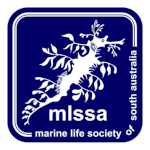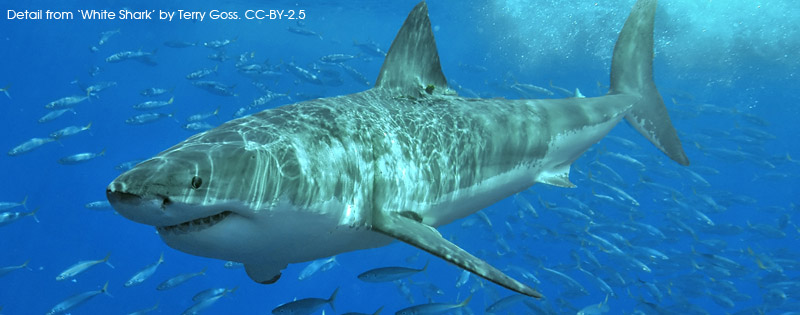To whom it may concern,
Please accept this submission as our official response to the announcement that alternative sites are to be investigated for the redistribution of shark cage diving tourism. We understand that the proposed redistribution follows the absence of sharks from long established sites near the Neptune Islands, a phenomenon possibly caused by an orca attack, witnessed by tour operators.
While we acknowledge that this activity has economically benefited the state and raised the profile of Great white sharks and marine ecology in South Australia, we have concerns regarding the potential impacts of the redistribution of this activity. The orca attack itself is an indication of the need to better understand the industry’s impact on marine ecology.
- Operators should refer their undertakings to the EPBC Act
We believe that the industry should be subjected to a higher level of overall environmental impact assessment, and that EPBC Act referral is the most appropriate mechanism for this. These tours’ main attraction is the Great White Shark, a listed Vulnerable species under the Act. Any interaction with this species would be otherwise prohibited. Given that future tours may occur in the vicinity of endangered Australian sealion colonies or foraging habitats, in our opinion it would be appropriate for each vendor to submit a unique referral to the EPBC act, disclosing their proposed action, its location (or locations) and creating an opportunity for Federal environmental department consideration and formal public comment.
- Avoid colonies of endangered Australian sealions
The majority of proposed sites are located near offshore islands, many of which are home to resident colonies of New Zealand fur seals and Australian sealions. While the New Zealand fur seal has recovered well in recent years from the impacts of sealing in the 1800s, Australian sealion populations have struggled to recover, as evidence in their EPBC Act recovery plan, linked below.
As such, we believe that the assessment of possible islands should study and consider the size and status of nearby seal and sealion colonies, and should avoid visiting places where colonies of Australian sealions are established or foraging grounds are likely.
We understand that shark cage diving currently involves the use of chumming or loud acoustic signalling in order to attract sharks. If these actions provide an incentive for Great white sharks to increase the frequency of their visitation near Australian sealion colonies, it is possible that this could lead to increased risk of predation of Great white sharks upon Australian sealions, and thus potentially adversely impact the endangered species’ recovery.
We are also concerned that chumming and acoustic signalling may habituate some sharks to the sound of boat motors, which could learn to associate them with food. This possibility has also been raised with us by a number of recreational fishermen, and we believe it is a matter deserving of further investigation.
- Offset greenhouse gas emissions
Given the desire to present ecotourism in a favourable light as a low or no impact activity, it would pay for tour operators to calculate the greenhouse gas emissions generated by their operations, and offset these in a meaningful way (for example funding native revegetation projects). This would be in line with world’s best practise ecotourism operation, and would mitigate the industry’s contribution to climate change, which will in turn adversely impact marine ecosystems via carbon dioxide contributions to ocean acidification and the warming of the oceans.
The longer the distance travelled, the greater the cost to the operator in fuel purchased, travel time and carbon-offsets. While it would appear that travelling shorter distances would be the best response to this problem, the other users of the marine environment should also be considered.
- Avoid Spencer Gulf locations
Spencer Gulf represents multiple future opportunities in marine and nautical eco tourism, including diving and snorkeling opportunities. Fishing trips and cruises, for example, to the Sir Joseph Banks Group of islands have been popular since the age of sail, and interactions between fishermen, nautical tourists, snorkelers, divers and shark dive operators should be avoided in order to reduce the likelihood of other users’ interactions with sharks (including the possibility of shark attack).
In our opinion, shark dive tourism should be confined to remote waters, beyond the mouth of Spencer Gulf for this reason.
The Marine Life Society of SA wishes to remain a key stakeholder in this discussion and we request that we be included in any further opportunities for consideration and comment.
Yours sincerely,
Steve Reynolds (President)
Dan Monceaux (Member and author of submission)


Keep me in the loop with this. I have yet to observe great white shark cage diving in South Australian waters despite a long association with Rodney Fox and family. I supported their application to be an operator and I look forward to comparing their operation with those that I have seen in South Africa and by happenstance while filming grey nurse sharks in Byron Bay, NSW. There is a definite place for gws – human interaction. In South Africa where the gws population is significantly larger, operators are affected by seasonal and biological circumstances that cause them to relocate in order to satisfy the expectations of clients who do include individuals for whom major sacrifices are made for a “once in a lifetime” encounter. We must not rely on the digital world to inform and to educate. Without going overboard with regulation we need to find that balance between sensitive environmental issues and being able to offer world class gws experiences that can add to the hard data through citizen science in association with viable charter operation in a global shark diving market that is expected to have exponential growth in the next 20 years. Tony Isaacson Founding President MLSSA/DiveCareDare
Good on you, Tony. Very well put and timely also.
As a current MLSSA Committee member, for reasons which are presently unclear to me (**feasibly because I may have given my verbal consent to proceed without my being able to proof-read a draft, knowing time was tight and knowing I’d already cc’d my personal ie ostensibly non-MLSSA thoughts on this topic to Steve during the preceding days/weeks, which however I perhaps naively imagined would still influence any formal MLSSA submission more than it has!**) I effectively did not contribute to MLSSA’s submission, and am surprised at its lack of logic, and excessively negative tones, having only just read it tonight. And while the virtual absence of any influence of my oft-stated opinions in the MLSSA submission may simply reflect my frequent short absences from IT connectivity, it rather irks me, because both Steve and Dan are very aware of my own thoughts on the controversial topic of shark cage ecotourism, a topic that has been frequently debated at most recent MLSSA meetings. My thoughts as a committee member have always been, and remain at considerable variance from the submission’s content.Yet this submission has been allowed to occur without attempts (as far as I’m aware) to contact me by one means or another eg a text message would usually reach me and be acknowledged on same day. That said, the closing date for submissions possibly left the persons concerned little choice.
So, with a rather heavy heart, allow me to put my views as a cmtee member on the record. I do so firmly believing MLSSA’s best interests are thus served.
The educational and pro-conservation benefits, now and future, of this commercial enterprise far outweigh any and all the alleged negatives such as threats to seals, sea lions and humans.
Any clear-minded person will accept that if they choose to speculate ad nauseam about altered shark behaviours due cage dive ecotourism, they must also, to have credibility, take as broad a view as possible, and this must include acknowledging a largely overlooked but huge elephant in the sea.
The elephant I refer to is the thousands of mainly recreational fishing boats from tinnies to big offshore cruisers that incidentally but inevitably train great whites to associate propellers, anchor drops, etc.. with food, be it the mere smell of berley, or the thrashing of hooked snapper being hauled to the surface alongside a boat. Anecdote informs us there is little doubt more snapper heads are boated, minus the body, in latter years than ever before. These boats fish waters directly off Adelaide, and all our main coastal towns, and have increased in numbers greatly over decades, but were already prevalent well before the onset of shark cage ecotourism operations anywhere in SA.
Added to that are various smaller elephants such as the 365/365 (or almost) practice of fishing, usually ‘overnight and out of sight’, for whalers, school sharks and such-like off all suburban and rural jetties and beaches accessible to the public.
It beggars belief that any thinking person can ignore these facts while targeting, mercilessly,the good guys,who do actually contribute valuable data and conduct or assist research into the biology of great whites.
Finally, as one who has twice (2012 and 2014) done day trips to the North Neptunes and thoroughly enjoyed the cage diving interaction with these wondrous creatures, (AND,even documented several completely unrelated new records for Cobia (aka Black Kingfish) as occurring in the Nth Neptunes) it seems fair to say ‘Give it a go before you bag it, fellas’.
‘The proof is in the sampling’, is another way of paraphrasing this.
David Muirhead
Current MLSSA Committee Member
(who has dived in SA for 4+decades, tries hard to keep an open mind, and greatly values ability to maintain a balanced perspective, while adhering equally to the precautionary principle, where appropriate ie in those scenarios for which it was chiefly intended)
PS: It also seems arrogant for any of us to think we are more capable of leading great whites within proximity to breeding seal and sea lion colonies, when they’ve evolved over millenia to hone their predatory skills and pinnipeds remain a major part of their diet, or will do so as long as there are enough pinnipeds in our subtropical, warm temperate and cool temperate oceans to warrant the effort by these ‘top order’ sharks.
To put it plainly, who among us imagines that the great whites that visit SA rely, even slightly, on ‘anthropogenic tip-offs’,to FIND pinniped colonies, when for millions of years they’ve spent their lives as the ultimate expert predators in this arena?!
If pinniped colonies in SA rally to reach sizeable, sustainable food sources for great whites, the sharks will be the first to know, and act accordingly.
The media often quote abalone divers and surfers who are vociferously anti-shark cage dive eco-tourism, yet I recall somebody telling me ages ago (might even have been a qualified marine ecologist in one or other SA Govt Dept, of that I’m unsure, but whoever it was left a lasting impression because of the non-emotive, dry, non-judgemental, pure science-based manner of communication) that two very plausible theories as to why abalone divers seemed to increasingly be threatened, even killed, by great whites were;
a):The divers were venturing further offshore and to deeper sites as more accessible sites became less productive (?poachers etc..?), and as dive gear (eg mixed gas options) and boat facilities improved.
That might carry inherent higher risk, and esp. if the ab divers tended to have longer bottom times.
b):Increased quotas aside, over time the mere presence in the water of odours emitted by distressed abalone during capture might attract great whites. Great whites don’t directly target abalone obviously, but they may be able to draw a connection between that practice and the possible presence of target prey, in this case large Western Blue Groper would presumably not be overlooked by a hungry great white shark and there must surely be occasions in SA where white sharks have successfully preyed on blue gropers, after all we know they eat snapper, schools of which often transit the very same reefs that are the home ranges for these larger groper wrasse.
David Muirhead